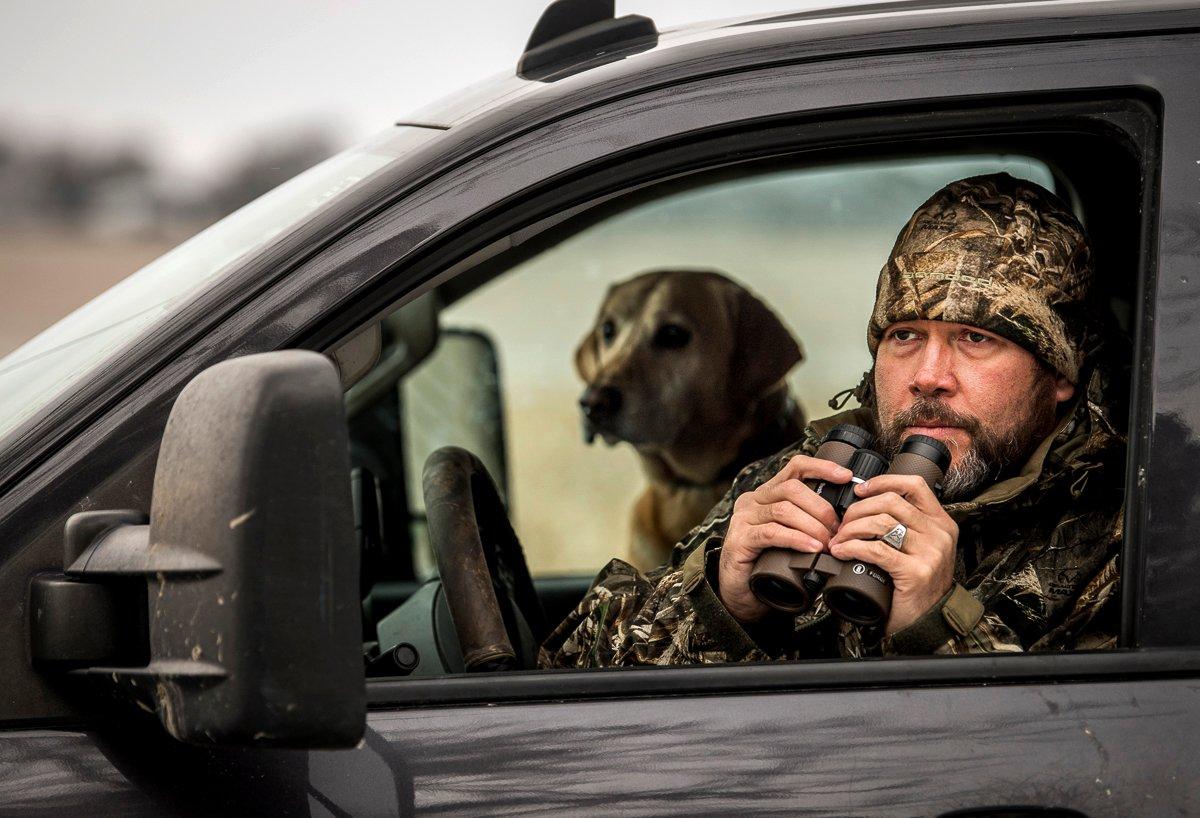You know the drill: windshield time and finding landowners. However, the pros take a deeper approach to locating and securing good feeds
Most field hunting articles start with a brief thought about putting in windshield time to find ducks and then delve deeply into setup tactics, decoy placement, and concealment concerns. That's almost comical, because sometimes the toughest element of a field hunt is locating birds and obtaining permission.
Sure, driving along country roads and glassing harvested ag fields works. But the pros — guys who make their living putting hunters on hot feeds — take a more detailed approach to scouting. Hopefully, their tips can help you find and shoot more dry-field ducks.
Start Before the Season
Chad Belding, host of The Fowl Life, begins gathering intel during the off-season, long before migrating ducks arrive.
“There are so many apps available now that give you the lay of the land, the property lines, and the landowners that you can easily find access to properties in the off-season,” he said. “That includes finding the water. Where are the river systems? Where are the holding ponds? Where are the cattle ponds? What's the water situation like? That's going to tell you where the ducks will be roosting once they get there during the migration. Once you know where those roosts are, you can kind of concentrate your scouting efforts.”
Belding also pays attention to the crops planted near those areas.
“Talk to the landowners,” he said. “What's in rotation this year? Do you have peas, beans, rice, or corn? What are they feeding this year? Know what the crops are going to be, and that will tell you where you need to focus your scouting.”
Start Earlier
Conventional wisdom holds that hunters should glass fields during early mornings and late evenings to find feeds. Tony Vandemore, owner of Habitat Flats, gets a far earlier start.
“It's always a mad rush in the evening, when birds start flying, to find them and secure permission,” he said. “I start during the day when birds are sitting on water. Finding good concentrations and roosts allows for a great starting point when the night flight starts. I typically try to get permission right away. If I get it then, I can go look at something else. I always come back and look at the field I'm going to hunt before dark, though, and watch the birds leave it.”
Double Your Efforts
One glance out the truck window can sometimes reveal a hot field. However, longtime guide Cooper Olmstead, also of Habitat Flats, said a tag-team approach works better.
“Finding field ducks can be more difficult than, say, Canadas or snows, mainly because of their size, as they are harder to spot than the larger geese,” he said. “One way to be more successful is to split up into two-man teams and scout out smaller plots or areas with the most water. I say two-man teams because it's easier for two people to scout from one vehicle than it is one. One person concentrates on driving while the other spots birds, reads the map, and navigates. You can cover a lot more ground that way and are more efficient in your scouting, which nowadays with fuel prices is key.”
Don't Underestimate
Olmstead said the biggest mistake many hunters make while scouting for field ducks is overlooking seemingly smaller feeds.
“One rule of thumb we use — and it seems pretty accurate — is whatever you see for ducks in a field, you can usually double it, and that's what is coming to the field,” he said. “With mallards, they don't all come at once, and they don't all just sit and eat. They hop, move around, and go back to the water and back to the field. If you only see a couple of hundred, chances are it's closer to 400 or 500.”
And when you identify a potential hotspot, jump on it.
“If you find a field with a huntable number of birds that will work with your wind and has a good hide, I would get permission on it right away,” he said. “Do not wait around or try to find something different. One in the hand is worth two in the bush.”
Backup Options
Belding also said that even after finding a good field, it's wise to seek a backup, if time allows.
“After I get permission for a hunt the next day, I'm back in the truck, behind the windshield, and looking for option B, because you just never know if something is going to happen to option A,” he said. “Maybe a coyote runs through them or an eagle flies over them and scares them up. They can easily go and find another area to feed in before it gets too dark.”
He also pointed out that many ducks follow a nocturnal feeding routine, especially in areas with heavy hunting pressure.
“They can feed well after the moon comes up and find their way back to their roosting spots,” he said. “So go look for option B, find the next largest concentration of ducks, and lock that one up. Then you have two options for the morning. Remember this, though: Always go back to option A before it's too dark to see it.”
(Don't miss: Sleeper States for Duck Hunting)
Click here for more Realtree waterfowl hunting content. And check us out on Facebook.









